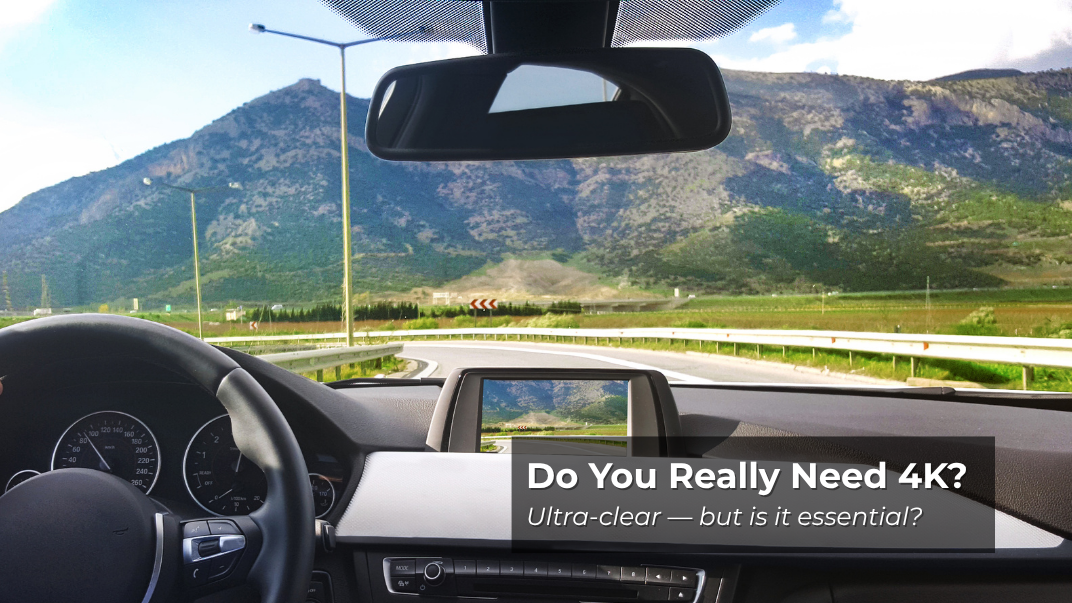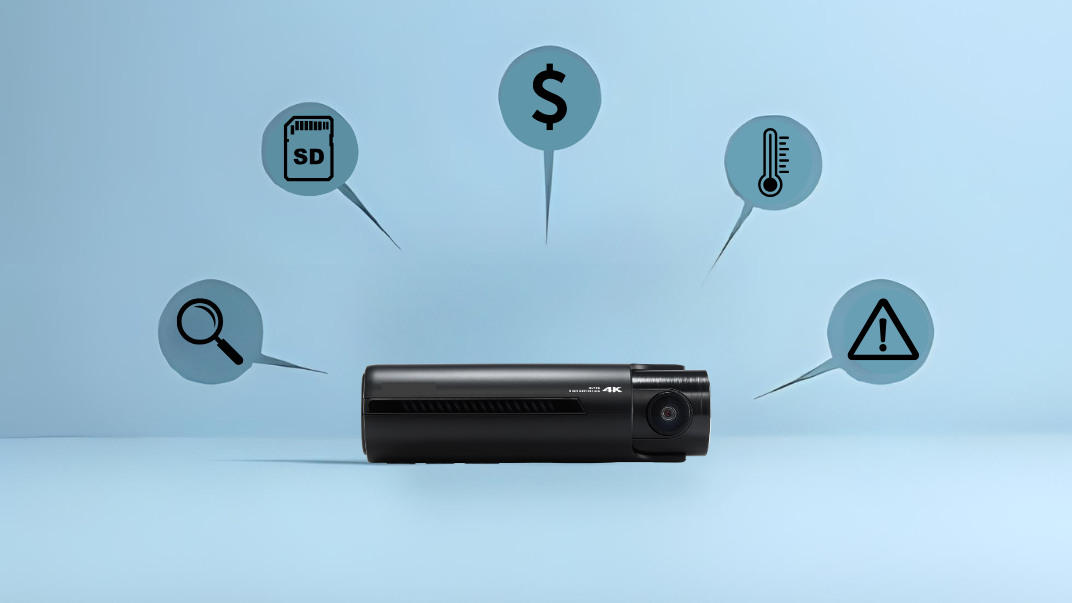Do You Really Need a 4K Dashcam?
What Is a 4K Dashcam, Really?
When shopping for a dashcam, it’s easy to get swept up by big numbers—especially when you see “4K” on the box. Ultra-clear video, razor-sharp license plates, better evidence in case of an accident—it sounds like a no-brainer. But before you spend extra for 4K, it’s worth asking: do you really need it?
4K dashcams record at 3840 x 2160 pixels, offering four times the resolution of standard Full HD (1080p). In theory, this means you can zoom into your footage without it turning into a blurry mess. You’ll capture more detail—like license plates from farther away or street signs in the distance—and the videos will look sharper on a large screen. If you ever need to use your footage for insurance or legal purposes, that clarity can come in handy.
The Hidden Costs of 4K
But the story doesn’t end there. 4K comes with some trade-offs. First, the file sizes are large—very large. You’ll need a high-capacity, high-speed memory card, and even then, the dashcam will overwrite old footage much faster. If you forget to back up a clip in time, it could be gone for good.
On top of that, 4K dashcams tend to cost more—not just the camera itself, but also the accessories and storage you’ll need to support it. And because 4K video requires more processing power, it generates more heat, which can affect performance in hot climates or during long drives.
There’s another issue many buyers overlook: not all 4K dashcams are created equal. Some cheaper models boast 4K resolution but use low-quality sensors or lenses. The result? Grainy, low-light footage that looks worse than a well-built 1080p camera. In other words, a higher resolution number doesn’t always guarantee better video quality.
When Does 4K Actually Make Sense?
It depends on how and where you drive. If you often commute on highways or drive at higher speeds, 4K can help you capture details of fast-moving vehicles that might be missed with lower resolutions. This is especially useful in case of hit-and-runs or sudden lane changes.
Also, consider the license plate size in your country. In places like the United States and Canada, license plates are generally smaller than those in countries like Korea or the UK. That means if a car is even a few lanes away, a higher resolution camera like 4K—or at least 2K (QHD)—will have a much better chance of capturing a readable plate. In regions with smaller, less reflective plates, resolution makes a noticeable difference.
If you’re a rideshare driver, delivery worker, or someone who might want to save and share footage—for insurance, legal cases, or even social media—then 4K becomes a worthwhile investment. The extra clarity helps you feel more confident that you’ve captured what matters.
For Everyday Drivers, Is 4K Worth It?
But for the average city driver who just wants peace of mind on the road, a well-made 1080p or 2K camera with a good lens and reliable recording may be more than enough. Features like night vision, motion detection, and wide dynamic range often matter more than just the pixel count.
In the end, 4K is great—but only if it fits your needs. If you truly need the extra detail, have the right storage setup, and are driving in situations where resolution gives you an edge, it can be a smart choice. Otherwise, don’t feel pressured to chase the highest resolution. Sometimes, good enough really is good enough.





